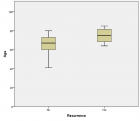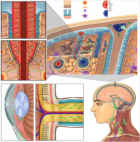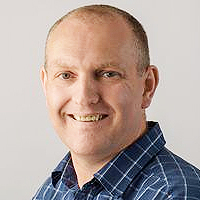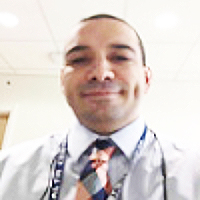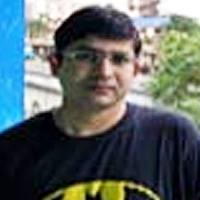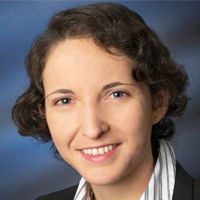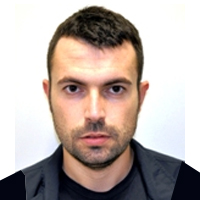Abstract
Research Article
Changes in the frequency and intensity of Tinnitus using the Suppressive Noise Spectrum
Ming Zhang*, Alysia Jeske and Sarah Young
Published: 21 July, 2017 | Volume 1 - Issue 1 | Pages: 006-012
Objective:To report findings of improvement in patient tinnitus intensity and changes in frequency using a novel suppressive noise spectrum.
Design: Single-subject; each subject served as his or her own control. Each patient received treatment, and changes were measured over time.
Setting: Tertiary referral via university otolaryngology and hospital audiology as well as audiology clinics in the region.
Patients: Fifteen tinnitus ears in 8 patients.
Interventions: Therapeutic and rehabilitative.
Main Outcome Measures:: Tinnitus frequency, tinnitus intensity, and tinnitus questionnaire.
Results (Findings): After 3 months of exposure to the customized suppressive noise spectrum therapy, patients showed a shift in tinnitus frequency in addition to a significant decrease in tinnitus intensity from the pre-treatment to post-treatment condition (p<0.05). Typically, improvement was gradual based on comparing 3 sets of data collected at baseline, 1.5 months and 3 months.
Conclusion: Using suppression in tinnitus is novel. Based on our findings, using a customized suppressive noise spectrum is effective in shifting the frequency, reducing the intensity of subjective tonal tinnitus, and improving the handicap based on THQ test. From this seminal report, factors related to maximizing its effectiveness (e.g., length of listening time, level of hearing loss, and application for alternative tinnitus types) may be considered for future research.
Read Full Article HTML DOI: 10.29328/journal.ated.1001002 Cite this Article Read Full Article PDF
Keywords:
Tinnitus; Customized Sound; Sound Therapy; Rehabilitation; Outcomes; IOWA Tinnitus; Handicap Questionnaire (THQ)
References
- Baguley D, McFerran D, Hall D. Tinnitus. Lancet. 2013; 382: 1600-1607. Ref.: https://goo.gl/GZFggQ
- Heller AJ. Classification and epidemiology of tinnitus. Otolaryngol Clin North Am. 2003; 36: 239-248. Ref.: https://goo.gl/wvoR1H
- Langguth B, Kreuzer PM, Kleinjung T, De Ridder D. Tinnitus: Causes and clinical management. Lancet Neurol. 2013; 12: 920-930. Ref.: https://goo.gl/Qq5FHd
- Pape J, Paraskevopoulos E, Bruchmann M, Wollbrink A, Rudack C, et al. Playing and listening to tailor-made notched music: Cortical plasticity induced by unimodal and multimodal training in tinnitus patients. Neural Plast.2014;2014: 1-10. Ref.: https://goo.gl/ZUnKcF
- Jackson JG, Coyne IJ, Clough PJ. A preliminary investigation of potential cognitive performance decrements in non-help-seeking tinnitus sufferers. Int J Audiol.2014; 53: 88-93. Ref.: https://goo.gl/ezcBJF
- Mohamad N, Hoare DJ, Hall DA. The consequences of tinnitus and tinnitus severity on cognition: A review of the behavioral evidence. Hear Res.2015; 1-11. Ref.: https://goo.gl/15XEXu
- Erlandsson SI, Hallberg LR. Prediction of quality of life in patients with tinnitus. Brit J Audiol. 2000; 34: 11-20. Ref.: https://goo.gl/fY7rtj
- Pantev C, Rudack C, Stein A, Wunderlich R, Engell A, et al. Study protocol: Münster tinnitus randomized controlled clinical trial-2013 based on tailor-made notched music training (TMNMT). BMC Neurol. 2014; 14: 14-40. Ref.: https://goo.gl/sM5wTQ
- Stracke H, Okamoto H, Pantev C. Customized notched music training reduces tinnitus loudness. Commun Integr Biol. 2010; 3: 274-277. Ref.: https://goo.gl/eSJLM5
- Teismann H, Okamoto H, Pantev C. Short and intense tailor-made notched music training against tinnitus: The tinnitus frequency matters. PLOS ONE. 2011; 6. Ref.: https://goo.gl/zD1747
- Okamoto H, Stracke H, Stoll W, Pantev C. Listening to tailor-made notched music reduces tinnitus loudness and tinnitus-related auditory cortex activity. Proc Natl Acad Sci U S A. 2010; 107: 1207-1210. Ref.: https://goo.gl/hgAQFN
- Ariizumi Y, Hatanaka A, Kitamura K. Clinical prognostic factors for tinnitus retraining therapy with a sound generator in tinnitus patients. J Med Dent Sci.2010; 57: 45-53. Ref.: https://goo.gl/YcqVbV
- Hobson J, Chisholm E, El Refaie A. Sound therapy (masking) in the management of tinnitus in adults. Cochrane Database Syst Rev. 2012; 11: 1-25. Ref.: https://goo.gl/FLq6gj
- Meeus O, Heyndrickx K, Lambrechts P, De Ridder D, Van de Heyning P. Phase-shift treatment for Tinnitus of cochlear origin. Eur Arch Otorhinolaryngol. 2010; 267: 881-888. Ref.: https://goo.gl/LjXaoN
- De Ridder D, Vanneste S, Weisz N, Londero A, Schlee W, et al. An integrative model of auditory phantom perception: Tinnitus as a unified percept of interacting separable subnetworks. Neurosci Biobehav Rev. 2013;44: 16-32. Ref.: https://goo.gl/a9aEmY
- Majkowski J, Bochenek Z, Bochenek W, Knapik-Fijałkowska D, Kopeć J. Latency of averaged evoked potentials to contralateral and ipsilateral auditory stimulation in normal subjects. Brain Res. 1971; 25: 416-419. Ref.: https://goo.gl/UdDRKv
- Poeppel D. The analysis of speech in different temporal interaction windows: Cerebral lateralization as ‘asymmetric sampling in time’. Speech Commun. 2003; 41: 245-255. : https://goo.gl/ARjYMm
- Zatorre RJ, Belin P, Penhune VB. Structure and function of auditory cortex: Music and speech. Trends Cogn Sci. 2002; 6: 37-46. Ref.: https://goo.gl/PueT7K
- Zatorre RJ, Grandour JT. Neural specializations for speech and pitch: Moving beyond the dichotomies. Philos Trans R Soc Lond B Biol Sci. 2008; 363: 1087-1104. Ref.: https://goo.gl/3kKH2s
Figures:

Figure 1
Similar Articles
-
Changes in the frequency and intensity of Tinnitus using the Suppressive Noise SpectrumMing Zhang*,Alysia Jeske,Sarah Young. Changes in the frequency and intensity of Tinnitus using the Suppressive Noise Spectrum. . 2017 doi: 10.29328/journal.ated.1001002; 1: 006-012
-
Feasibility study on the evaluation of the effect of narrow-band CE-Chirp ASSR in the hearing field after hearing aid in hearing-impaired childrenWang Yonghua*,Xing Shuoyao. Feasibility study on the evaluation of the effect of narrow-band CE-Chirp ASSR in the hearing field after hearing aid in hearing-impaired children. . 2019 doi: 10.29328/journal.ated.1001007; 3: 007-011
Recently Viewed
-
Maternal and perinatal outcomes of uterine rupture in Lubumbashi, Democratic Republic of CongoJacques Ngoy Kitenge,Olivier Mukuku*,Xavier K Kinenkinda,Prosper L Kakudji. Maternal and perinatal outcomes of uterine rupture in Lubumbashi, Democratic Republic of Congo. Clin J Obstet Gynecol. 2020: doi: 10.29328/journal.cjog.1001067; 3: 136-141
-
Do Fishes Hallucinate Human Folks?Dinesh R*,Sherry Abraham,Kathiresan K,Susitharan V,Jeyapavithran C,Paul Nathaniel T,Siva Ganesh P. Do Fishes Hallucinate Human Folks?. Arch Food Nutr Sci. 2017: doi: 10.29328/journal.afns.1001003; 1: 020-023
-
Assessment of Redox Patterns at the Transcriptional and Systemic Levels in Newly Diagnosed Acute LeukemiaAna Carolina Agüero Aguilera, María Eugenia Mónaco, Sandra Lazarte, Emilse Ledesma Achem, Natalia Sofía Álvarez Asensio, Magdalena María Terán, Blanca Alicia Issé, Marcela Medina, Cecilia Haro*. Assessment of Redox Patterns at the Transcriptional and Systemic Levels in Newly Diagnosed Acute Leukemia. J Hematol Clin Res. 2024: doi: 10.29328/journal.jhcr.1001029; 8: 017-023
-
Assessment of Indigenous Knowledge on Using of Traditional Medicinal Plants to Cure Human Diseases in South Omo Zone Baka Dawla Ari District, Kure and Bitsmal South EthiopiaGizaw Bejigo*. Assessment of Indigenous Knowledge on Using of Traditional Medicinal Plants to Cure Human Diseases in South Omo Zone Baka Dawla Ari District, Kure and Bitsmal South Ethiopia. J Plant Sci Phytopathol. 2024: doi: 10.29328/journal.jpsp.1001132; 8: 048-054
-
Nanoencapsulated Extracts from Leaves of Bauhinia forficata Link: In vitro Antioxidant, Toxicogenetic, and Hypoglycemic Activity Effects in Streptozotocin-induced Diabetic MiceBárbara Verônica Cardoso de Souza, Alessandra Braga Ribeiro*, Rita de Cássia Meneses Oliveira, Julianne Viana Freire Portela, Ana Amélia de Carvalho Melo Cavalcante, Esmeralda Maria Lustosa Barros, Luís Felipe Lima Matos, Tarsia Giabardo Alves, Maria. Nanoencapsulated Extracts from Leaves of Bauhinia forficata Link: In vitro Antioxidant, Toxicogenetic, and Hypoglycemic Activity Effects in Streptozotocin-induced Diabetic Mice. Arch Pharm Pharma Sci. 2024: doi: 10.29328/journal.apps.1001063; 8: 100-115
Most Viewed
-
Evaluation of Biostimulants Based on Recovered Protein Hydrolysates from Animal By-products as Plant Growth EnhancersH Pérez-Aguilar*, M Lacruz-Asaro, F Arán-Ais. Evaluation of Biostimulants Based on Recovered Protein Hydrolysates from Animal By-products as Plant Growth Enhancers. J Plant Sci Phytopathol. 2023 doi: 10.29328/journal.jpsp.1001104; 7: 042-047
-
Sinonasal Myxoma Extending into the Orbit in a 4-Year Old: A Case PresentationJulian A Purrinos*, Ramzi Younis. Sinonasal Myxoma Extending into the Orbit in a 4-Year Old: A Case Presentation. Arch Case Rep. 2024 doi: 10.29328/journal.acr.1001099; 8: 075-077
-
Feasibility study of magnetic sensing for detecting single-neuron action potentialsDenis Tonini,Kai Wu,Renata Saha,Jian-Ping Wang*. Feasibility study of magnetic sensing for detecting single-neuron action potentials. Ann Biomed Sci Eng. 2022 doi: 10.29328/journal.abse.1001018; 6: 019-029
-
Pediatric Dysgerminoma: Unveiling a Rare Ovarian TumorFaten Limaiem*, Khalil Saffar, Ahmed Halouani. Pediatric Dysgerminoma: Unveiling a Rare Ovarian Tumor. Arch Case Rep. 2024 doi: 10.29328/journal.acr.1001087; 8: 010-013
-
Physical activity can change the physiological and psychological circumstances during COVID-19 pandemic: A narrative reviewKhashayar Maroufi*. Physical activity can change the physiological and psychological circumstances during COVID-19 pandemic: A narrative review. J Sports Med Ther. 2021 doi: 10.29328/journal.jsmt.1001051; 6: 001-007

HSPI: We're glad you're here. Please click "create a new Query" if you are a new visitor to our website and need further information from us.
If you are already a member of our network and need to keep track of any developments regarding a question you have already submitted, click "take me to my Query."








